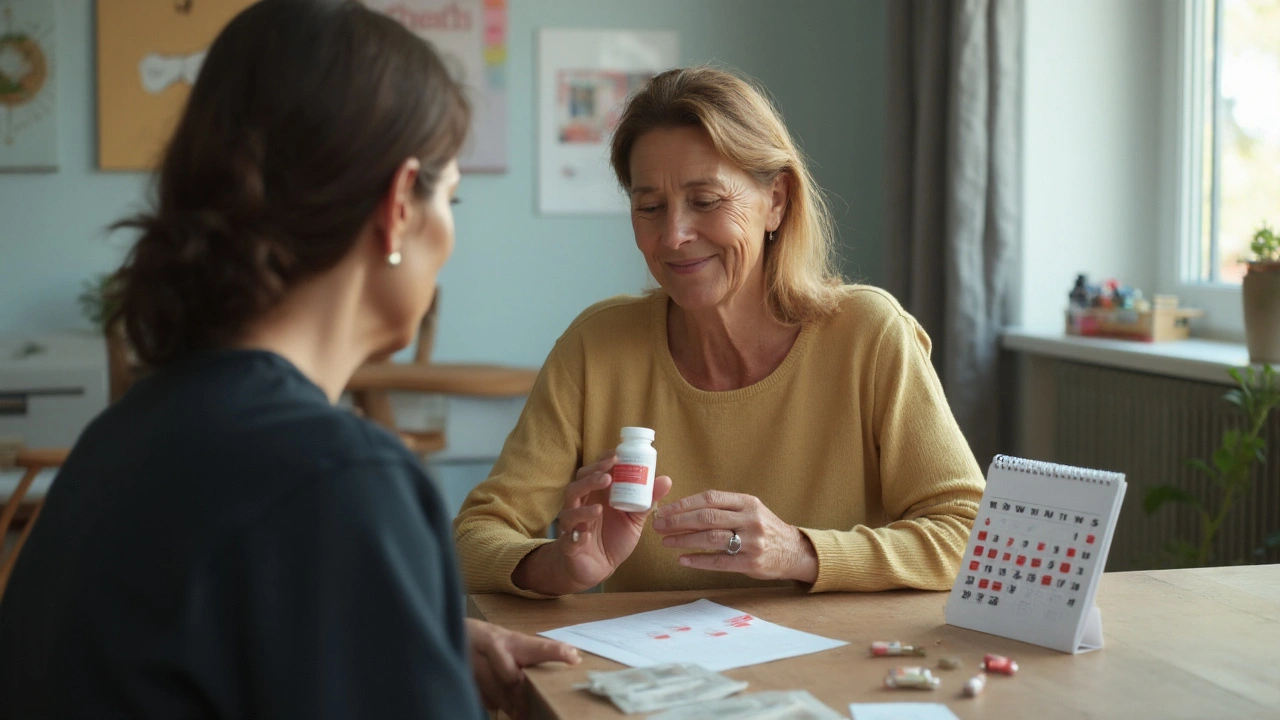- Switching from Metformin: Effective Alternatives, Dosing Tips, and Insurance Insights Jul 27, 2025
- Unlock the Best Deals on Viagra Black: A Complete Buying Guide Jan 15, 2024
- Why Social Connection Matters in Dementia: Practical Guide for Caregivers and Families Sep 5, 2025
- Buy Cheap Generic Tamoxifen Online - 2025 Guide Oct 1, 2025
- Medicaid Generic Coverage: State-by-State Variations and Requirements Nov 27, 2025
Postherpetic Neuralgia Prevention: How to Keep the Pain at Bay
If you’ve ever had shingles, you know the rash can be scary. What’s scarier is the lingering nerve pain that some people call postherpetic neuralgia (PHN). The good news? You can cut the odds of PHN with a few practical steps. Below are the most effective moves you can make right now.
Get the Shingles Vaccine – Your First Line of Defense
The single most powerful tool against PHN is the shingles vaccine. Two shots, given a few months apart, train your immune system to keep the varicella‑zoster virus in check. Studies show vaccinated adults over 50 are far less likely to develop shingles, and if they do, the rash is milder and the nerve pain rarely sticks around. Talk to your doctor about the recombinant zoster vaccine (RZV) – it’s the one with the best track record.
Act Fast When the Rash Appears
Time matters. Antiviral pills like acyclovir, valacyclovir, or famciclovir work best if you start them within 72 hours of the rash showing up. They shorten the outbreak and reduce nerve damage, which directly lowers PHN risk. If you notice tingling, redness, or a cluster of blisters, call your pharmacy or doctor right away – don’t wait for the pain to get worse.
Alongside antivirals, keep the rash clean and dry. Use mild soap, pat it gently with a clean towel, and apply a cool compress to soothe itching. Avoid scratching because broken skin can invite infection, which makes nerve irritation more likely.
Support Your Nerves with Healthy Habits
Even if you’ve had the vaccine and treated the rash early, everyday habits can still influence nerve health. Stay active – light walking or stretching improves blood flow to nerves and helps the body repair itself faster. Aim for at least 150 minutes of moderate activity each week.
Eat foods rich in B‑vitamins, especially B12 and B6. These vitamins help myelin, the protective coating around nerves, stay strong. Think leafy greens, whole grains, eggs, and lean meats. If you’re vegetarian or have a known deficiency, talk to a pharmacist about a supplement.
Stress fuels inflammation, which can worsen nerve pain. Try simple relaxation tricks like deep breathing, a short meditation, or a hobby you enjoy. Even a five‑minute break can lower cortisol levels and give your nerves a chance to calm down.
Watch Your Meds and Ask About Pain‑Preventing Options
Some medications, especially certain pain relievers, can actually increase the chance of PHN if used incorrectly. NSAIDs (like ibuprofen) are fine for mild pain, but if the pain is sharp or burning, a doctor might prescribe a low‑dose tricyclic antidepressant or gabapentin. These drugs not only treat pain but also protect nerves from long‑term damage.
Always tell your healthcare provider about any over‑the‑counter meds, supplements, or herbal products you take. Interactions can reduce the effectiveness of antivirals or increase side effects, which indirectly raises PHN risk.
Keep Track – Your Personal PHN Prevention Log
Write down when you first notice symptoms, what treatments you start, and how you feel each day. A simple notebook or phone note helps you and your doctor see patterns. If pain lingers past two weeks, that’s a sign to get a follow‑up sooner rather than later.
Remember, preventing postherpetic neuralgia isn’t a single magic bullet. It’s a combo of getting vaccinated, treating shingles fast, supporting nerve health, and staying on top of meds. Follow these steps, and you give your nerves the best chance to stay pain‑free.
How to Prevent Postherpetic Neuralgia After Shingles - Proven Tips
- Garrick Elderton
- Sep 22, 2025
Learn practical steps to lower the risk of postherpetic neuralgia after a shingles outbreak, from early antivirals to lifestyle tweaks and pain‑relief tricks.
